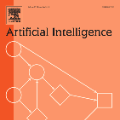The remarkable progress of artificial intelligence (AI) has revealed the enormous energy demands of modern digital architectures, raising deep concerns about sustainability. In stark contrast, the human brain operates efficiently on only ~20 watts, and individual cells process gigabit-scale genetic information using energy on the order of trillionths of a watt. Under the same energy budget, a general-purpose digital processor can perform only a few simple operations per second. This striking disparity suggests that biological systems follow algorithms fundamentally distinct from conventional computation. The framework of information thermodynamics-especially Maxwell's demon and the Szilard engine-offers a theoretical clue, setting the lower bound of energy required for information processing. However, digital processors exceed this limit by about six orders of magnitude. Recent single-molecule studies have revealed that biological molecular motors convert Brownian motion into mechanical work, realizing a "demon-like" operational principle. These findings suggest that living systems have already implemented an ultra-efficient information-energy conversion mechanism that transcends digital computation. Here, we experimentally establish a quantitative correspondence between positional information (bits) and mechanical work, demonstrating that molecular machines selectively exploit rare but functional fluctuations arising from Brownian motion to achieve ATP-level energy efficiency. This integration of information, energy, and timescale indicates that life realizes a Maxwell's demon-like mechanism for energy-efficient information processing.
翻译:暂无翻译




